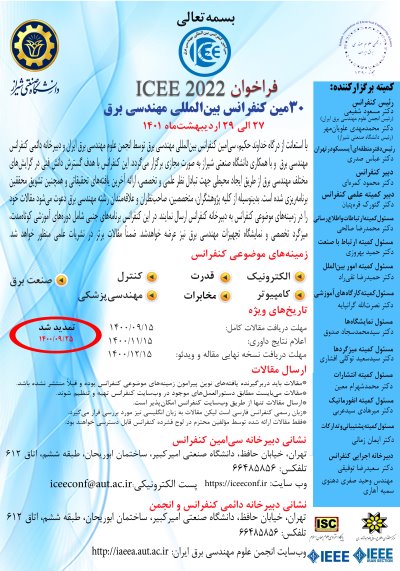0% Complete

نویسندگان :
کلمات کلیدی :
چکیده :
لیست مقالات بایگانی شده
Mohammad Javad Abdollahifard - Reza Bahrami
Mohammad Reza Zeinali - Amir Hossein Aalipour - Hossein Shamsi
سید محسن علی پور - کیان شاهین فر - سید محمد شهرتاش
Arian Mianji - Mohammad Bemani - Saeid Nikmehr - Ahmad Atashpaz Gargari
Ali Vazani - Valiollah Ghaffari
MohammadAmin Latifi - Fereidoon Behnia
Reza Rezaei - Seyed Reza Mousavi Aghdam
Seyed Amir Hossein Mohamadi - Seyed Amir Mohammad Lahaghi - Shayan Nazari - Behrooz Zaker
Nasrin Majlesi - Amir Rashidi - Morteza Saghaian Nejad
Abdolah RoshanaeeDeh - Masoud Shafiee - Hajar Atrianfar




